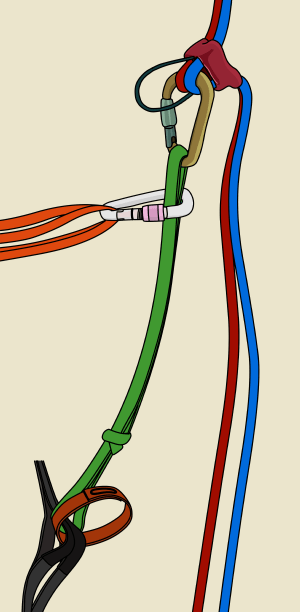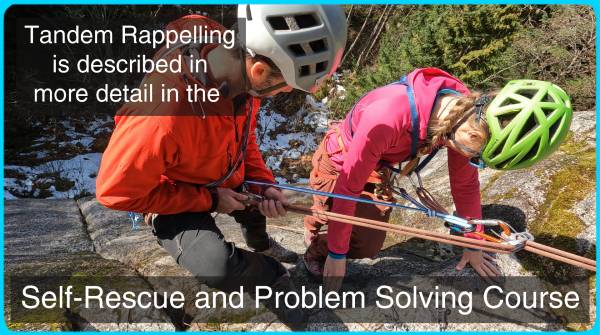Check out the full self-rescue video course, or download the e-book.
Tandem abseiling means two people descending with the same device. It is most useful when descending with an injured climber.
A simple tandem abseil setup:
- ‘Lead’ abseiler is attached to the belay device with a shoulder-length sling girth-hitched through their belay loop.
- Lead abseiler uses a prusik.
- Second abseiler is attached to the belay device with a shoulder-length sling doubled through their harness. This allows the climbers to be staggered slightly.
- Both climbers are attached with separate screwgates to the belay device. The two carabiners add extra friction therefore making it easier to control the descent. They also allow each climber to be on independent systems.
Because of the doubled weight, you might benefit from adding extra friction to the abseil.
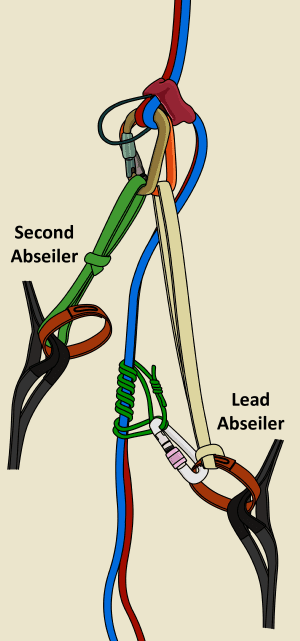
Multiple Tandem Abseils
If your partner is incapacitated, you should attach them to each station with a releasable clip-in (such as a length of cord tied with a munter-mule-overhand), backed up with a sling.
Pre-attach this to their harness before you begin the descent.
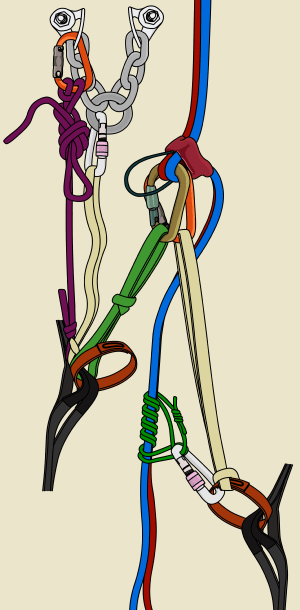
Tandem Abseiling > Chest Harness
You could make an improvised chest harness to keep your partner in a better position during the descent.
Step 1
Tie an overhand knot in the middle of a double-length sling.
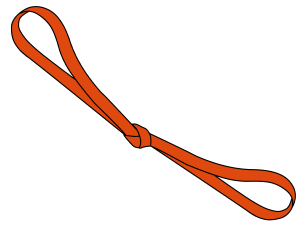
Step 2
Insert your partner’s arms into the loops, as if you were helping them put a jacket on.

Step 3
Clip the two ends of the sling around the abseil rope (no knot is needed – the carabiner should run freely down the ropes).
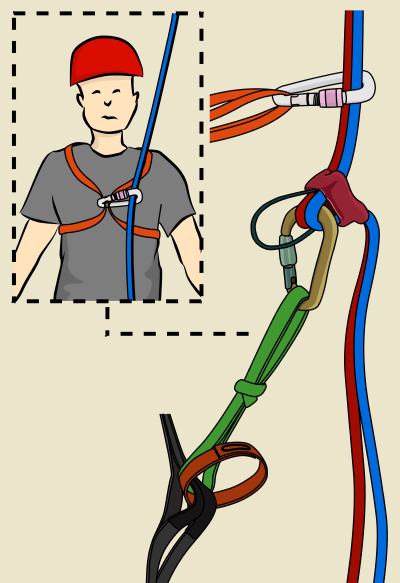
An alternative is to clip the chest harness to your partner’s abseil sling.
Be careful not to descend past your next abseil station – prusiking back up with an extra person hanging from your harness may be impossible.
